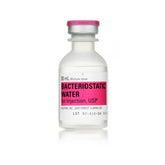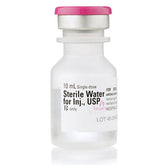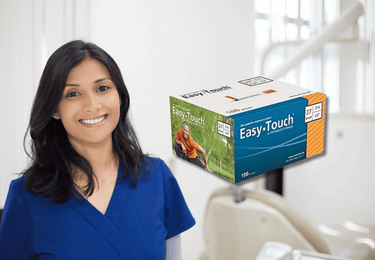Whether you're a healthcare professional, a caregiver, or simply someone looking to gain knowledge, understanding the specifics of injection techniques is crucial. Administering injections correctly ensures not only that the patient receives the full therapeutic benefit of the medication, but also that the process is safe and free from complications. In this article, we'll delve deep into the two most common types of injections: Intramuscular (IM) and Subcutaneous (SC), highlighting their differences, proper administration methods, and more.
Injections have become an integral part of modern healthcare, aiding in the treatment of numerous conditions, from diabetes to immunizations. As we navigate through the intricacies of IM and SC injections, remember that precision and awareness can make all the difference in the world of medicine.
The Basic Differences Between Intramuscular and Subcutaneous Injections
When it comes to administering injections, understanding the type and method is essential. Let's break down the distinctions between Intramuscular (IM) and Subcutaneous (SC) injections.
Intramuscular (IM) Injections:
- Definition: An IM injection is one that delivers medication directly into a muscle.
- Characteristics and typical uses: Due to the rich blood supply of muscles, IM injections tend to have a faster absorption rate. They're commonly used for vaccines, antibiotics, and hormones.
Subcutaneous (SC) Injections:
- Definition: An SC injection, on the other hand, is administered into the fatty layer just below the skin.
- Characteristics and typical uses: These injections offer a slower, more gradual release of medication. They're often chosen for insulin, certain vaccines, and allergy shots.
Visual Insight: Imagine the human body's cross-section. The skin's outer layer is followed by a fatty layer, then deeper lies the muscle tissue. SC injections target the fatty layer, while IM injections go past this, reaching the muscle.
The Implications of Incorrect Injection Methods
The significance of using the correct injection technique cannot be understated. Missteps can lead to inefficiencies in medication delivery, or worse, potential health risks.
What happens if you inject Intramuscular instead of Subcutaneous?:
-
When a medication intended for subcutaneous delivery is injected into the muscle, it's absorbed faster than planned. This quick absorption can lead to unexpected high levels of the drug in the bloodstream, posing risks of side effects or even overdosage.
-
Conversely, giving an IM-intended medication subcutaneously might lead to slow or incomplete absorption. The patient may not receive the full therapeutic benefit, necessitating repeated doses or leading to suboptimal treatment outcomes.
Importance of Ensuring the Right Method:
- Safety: Correct injection ensures the patient isn't exposed to unnecessary risks.
- Efficacy: The medication works as intended, offering the desired therapeutic results.
- Comfort: Proper technique reduces pain and potential tissue damage.
Practical Tips for Proper Injection Administration
Administering injections is a delicate task that combines scientific knowledge with practical skills. Knowing the right techniques and precautions can make a significant difference in the safety and effectiveness of the treatment. Here, we provide detailed insights and tips to ensure that each injection administered is both safe and efficacious.
Can subcutaneous injection hit muscle?
Certainly, especially in individuals with low body fat or if the needle is inserted too deeply. The key here is to ensure that the correct needle length and injection technique are employed to prevent this from occurring. Being aware of the patient's body composition and adjusting the technique accordingly is vital to ensuring the medication is delivered to the intended tissue.
Where is the best place to inject a subcutaneous injection?
Administering a subcutaneous injection involves choosing the right spot to ensure optimal absorption and minimize discomfort. Here’s a handy list of common sites:
- Abdomen: Stay clear of the area around the navel.
- Front of the thighs: Ideal, especially for self-administration.
- Upper outer arms: Great option, but sometimes requires assistance.
Remember to rotate injection sites to avoid skin irritation and other complications.
Do you pinch the skin for an IM injection?
This is a common question and the answer is no. The pinching technique is typically reserved for subcutaneous injections to lift the fatty tissue and ensure the medication doesn't enter the muscle. For IM injections, the goal is to penetrate the muscle tissue, so the skin should be held taut, not pinched, to ensure correct and easy insertion.
Additional Practical Tips:
- Gauge the Needle Right: Always use the recommended needle size. A larger gauge may be needed for IM to penetrate the muscle tissue, while SC injections require shorter, finer needles.
- Angle of Entry: For IM, a 90-degree angle is usually ideal. For SC, angles between 45 to 90 degrees depending on the patient’s body build can optimize delivery.
- Hygiene First: Always ensure the injection site is cleaned properly to avoid infection. Use an alcohol swab and let it air dry before proceeding.
In essence, the mastery of administering injections lies in the intricate balance of understanding the types of injections, the anatomy of the patient, and the specific requirements of the medication being administered. By paying close attention to these aspects, healthcare providers and caretakers alike can ensure that each injection not only serves its therapeutic purpose but is also administered with the highest degree of safety and comfort for the patient.











